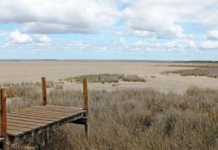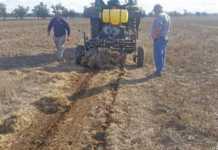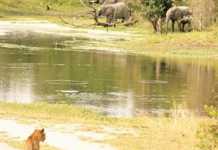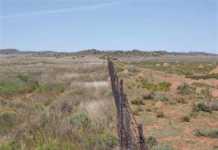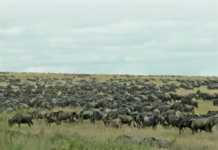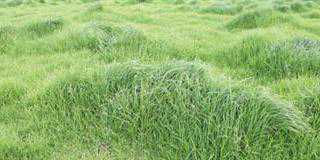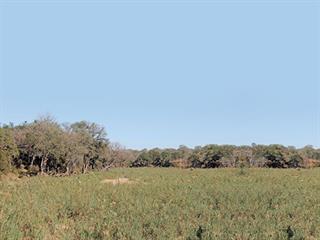
On the map, the Kruger National Park’s two million hectares has a quirky shape, a bit like a lumpy boot – long and narrow, with the toe pointing west to the interior and the calf backed up against Mozambique. The Crocodile River in the south runs under the heel and sole of the boot and the Limpopo forms the northern boundary, around the knee.
What isn’t marked on the map is the heart of the Kruger National Park (KNP), a heart that beats regardless of science and statistics. It mysteriously fuses the parts into a functional whole, and lies beyond attempts to control, manipulate and enclose.
Using the learning gained through decades of exposure to this ecosystem, the KNP’s managers have evolved and adapted their strategy from early custodial protect-and-guard styles, through various intervention and control-based systems towards a more fluid, inclusive approach – hands-off, but not haphazard.
The rationale behind this latter approach is to protect biodiversity in functioning ecosystems, says Dr Freek Venter, a conservation manager who has lived and worked in the KNP for more than 36 years. Biodiversity acknowledges the variety of life on earth, the abundance of species in an ecosystem in which plants, animals and other organisms interact with the environment. It is generally accepted that diversity is necessary for sustainability.
READ MORE: Managing grasslands for biodiversity
“It is reckless to suppose that biodiversity can be diminished indefinitely without threatening humanity itself,” wrote Edward Wilson, the ‘father of biodiversity’. According to Freek, the KNP seeks “to maintain biodiversity in all its natural facets and fluxes, allowing for a cascade effect.” A river’s biodiversity, for example, cannot be maintained in an isolated stretch of water, separate from what is happening in the rest of the catchment.
It is easier to have excellent and predictable management delivery in fields such as transport and engineering. After all, who among us boards an aircraft with no knowledge of our arrival time or destination? “But we deal with complex systems that are not easy to understand, and we have to manage them with humility, recognising the wider socio-economic context,” says Freek.
Fluid approach
The intricate architecture of the ecosystem defies attempts at ‘straight line’ management, demanding instead an approach that requires fluidity, grace, balance, and an open mind prepared to accept new concepts and accommodate discovery. “We must manage in the face of uncertainty, and there are no successful outcomes guaranteed,” stresses Freek.
The style of adaptive management, or the ‘learn-as-you-go’ strategy favoured at the KNP, presents an opportunity to build in the flexibility necessary in a continually changing system. “The command-and-control model, a strategy currently applied in the game industry, appears to be losing resilience and heterogeneity,” he notes. Once seen with understanding, the effect of loss of diversity becomes chillingly obvious.
Consider mono-cropping and the associated loss of variety, a diminished diversity that extends from the tiniest soil organisms below the surface, through the roots and canopy of the crop to the air above. Many farmers now realise that biodiversity can be a useful ally and leave patches and corridors of uncropped ‘natural’ areas as habitat for the survival of plants, insects and animals that are beneficial to agriculture.

SA is one the world’s most biodiverse countries, and Freek Venter stresses the need to manage the system rather than the species to keep diversity high.
Design and detail
At the KNP, the process begins by looking at the big picture first, before moving on to details and specifics. “We start by defining objectives and then focus on short-term management programmes. If a programme is ineffective it will soon tell you,” says Freek. A ‘backward look’ at research every five to 10 years is often enlightening and helps with repositioning, he adds. Details and concepts have a way of looping back and forth in ecosystem management.
“On-the-ground management is critical if one is to stay on track with adaptable programmes and monitor outcomes effectively.” Freek explains that poaching has weakened capacity in this area because rangers, who act as the system’s sensors, are taken up with the business of crime prevention and have less time to stay alert to small but potentially meaningful changes.
Conservationist Ross English, who died young and was virtually fashioned from Kruger’s clay, told fellow students: “See without looking, notice without noticing, keep watching – without watching, of course – and a break in the form will come into your field [of vision]. Don’t focus, keep looking at the form and the details will come.”
Drivers of change
Rain, a major driver of the KNP ecosystem, falls between October and April and varies from 750mm in the south-west to 350mm in the north. The dry season and the rainy season and longer wet and dry cycles are part of the greater picture and must be accepted as such, says Freek.
“For example, Kruger’s buffalo population took a serious knock in the drought of the early 1990s, but buffalo numbers are back up now. In wet cycles too there are system changes. Reed beds may be destroyed and loads of sand scoured out and redeposited by flooding.” These changes are the “healthy oscillations of a savannah”.
Although change is necessary in a dynamic system, management delivery can become impossible if the system is too drastically altered. According to Freek, the Sabie River has reasonable environmental health although there is a decline in the fish index, but the same cannot be said for the Crocodile.
“There are serious red lights flickering for this river. In December, the fish index dropped to a new bottom line. It’s difficult for the KNP to manage the rivers as they rise outside our boundaries.”
Freek explains that the Crocodile and the Olifants rivers have the hallmarks of poor aquatic health, and the once-large crocodile population of the Olifants river gorge is no longer the size it was. Catchment runoff areas are regional ‘water factories’ and everyone wants the water, from mining operations, exotic timber plantations and mills, to communal farmers and villages.
“We work with outside organisations, NGOs and the Department of Water Affairs to target and find solutions for problem areas outside the park but still inside the catchment,” says Freek.
Borehole restoration
In the multi-layered management approach to biodiversity conservation, wilderness areas are zoned to conserve particular qualities. As part of an ecosystem restoration programme, a number of boreholes have been closed, which means that water is available in summer pans occurring throughout the KNP.
“When the pans dry up, the animals move to the rivers. After the rains they move out again. Borehole closures encourage a more natural system of grazing,” explains Freek. In the early 1980s, Dr Gus Mills, a world authority on carnivores, fought for the closure of artificial water points in what is now the Kgalagadi Transfrontier Park. Time proved him right, but time is the very thing the system and its living components may not have. It’s an example of the importance of open-mindedness.

Rivers cannot be managed in isolation from the rest of the catchment. KNP managers work with other catchment users to target and find solutions for rivers with poor aquatic health.
Influence of fire
The savannah is a fire-climax regime, and the influence of fire on grasslands is well known. Savannah managers use fire in various ways to maintain or achieve vegetation objectives, just as extensive grazing managers do. Nevertheless unexpected discoveries, that merit different burning treatments, have been made.
“The productive grasslands on the basalt plains of the south-east don’t get the intensive hot fires,” explains Freek. “We found that more frequent fires reduced woody vegetation cover more than less frequent fires, and dry-season fires reduced woody vegetation more than wet-season fires. Spring fires from the late dry season reduced woody cover the most and summer fires from the wet season reduced it the least.”
In the wooded granitic landscapes, fire had a more profound effect on structure, with woody vegetation more reduced in drier than in wetter landscapes. “Fire frequency and fire season influence patterns of vegetation’s three dimensional structure, which may have cascading consequences for biodiversity,” says Freek.
Elephants also influence the landscape and where they cannot get in, the bush is denser. “By excluding elephants from certain areas we can tell that we’re losing large trees in the landscape.” In areas where elephant occur, almost 20% of trees 8m and taller have been lost. There are some ideas about managing the way elephants use space to keep them away from sensitive areas by creating a landscape of fear.
“But there won’t be a return to the culling programme. Moving big bulls and breeding herds can help but will not ultimately solve the problem,” says Freek. The management plan was to get rid of the fences and open up the area to the greater Limpopo conservatioon area, increasing the territory to an effective 10 million hectares. ”However, in practice, communities who began to colonise the Limpopo valley stopped the territorial expansion of elephant because the animals had to break through a barrier of human habitation,” says Freek.
Tourists and neighbours
The KNP is one of the world’s most popular public entry parks, and tourist access and needs must be catered for as an important part of the whole system. “We’ve started to diversify the tourist experience by offering backpacking and wilderness trails that take people off the road and onto their feet,” says Freek. The park is adjacent to small-scale cropping and communal grazing farming communities as well as private conservation, game, cattle and high-value commercial crop farmers and hunting concessions.
READ MORE: Grazing and burning to maintain biodiversity
“If we don’t invest in our neighbours, we’ll have problems,” says Freek, highlighting the KNP philosophy of incorporating the needs of buffer communities into its management strategy. South Africa is the world’s third most biodiverse country, says Freek, adding that to keep diversity high, “we must manage the system rather than the species”.
The approach, then is to manage with a light but informed hand, and allow the inherent balance in the system to right itself in a series of movements weighted and counter-weighted by weather, animals, plants, rocks and humanity.
Email [email protected].

